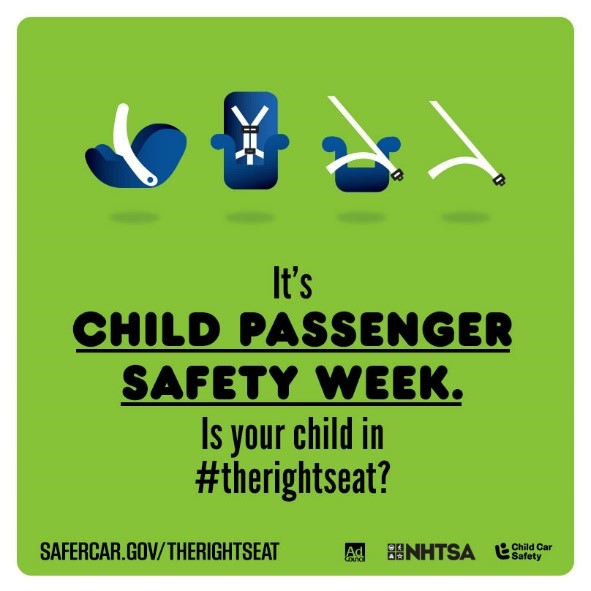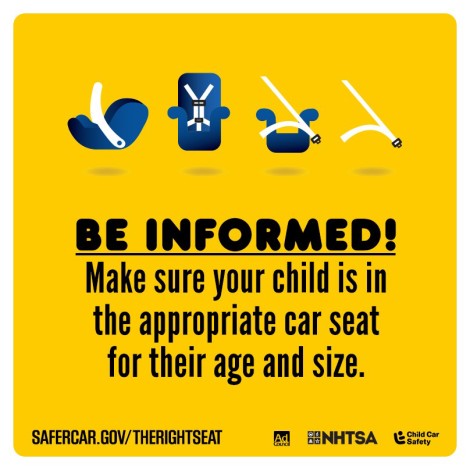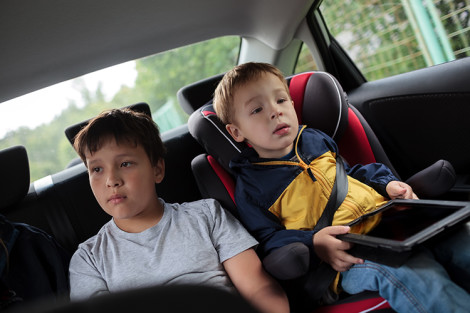Take the time to spread the message of how important Child Passenger Safety week really is!

Did you know that every 33 seconds a child under 13 is involved in a car crash in the United States? That probably isn’t the first thing you think about when you are hauling your kids to school, the grocery store, or anywhere else around town. And really, you shouldn’t have to worry about whether or not your child is safely snuggled into the right car seat every time you get in the car. Instead, make sure your child is in the right seat from the get-go.
Safety seats, if used correctly, can dramatically reduce the risk of fatality or injury. But over half of car seats are misused in a way that could reduce their effectiveness and 1 in 3 children killed in car crashes were completely unrestrained at the time of the crash. Just the thought of that is devastating. So why not select the right car seat from the start?
Unfortunately, there are so many parents out there who are not educated on the ins and outs of car seat safety. It is so important that we get the word out and educate parents and caregivers about the importance of selecting the right seat for their child’s age and size, and to remind them that car seats, booster seats and seat belts offer the best protection for children in crashes and help save lives.

Don’t wait until it is too late. Check out http://www.safercar.gov/parents/CarSeats/Car-Seat-Safety.htm to make sure you have the right seat buckled in the right way.
Car Seat Safety Tips:
- Find a car seat that fits your child. As children grow, how they fit in their car seat will change. Make sure the car seat you purchase is designed to fit your child’s current size and age.
- Not all car seats fit in all vehicles so test the car seat you plan to buy to make sure it fits correctly in your vehicle.
- Before installing your car seat in your vehicle and putting your child in the car seat, read the manufacturer’s instructions so you know how your car seat works.
- All-in-One car seats offer you the advantage of using the same seat for the following positions: rear-facing, forward-facing with harness, then booster. These seats typically have higher height and weight limits for the rear-facing position, allowing you to keep your child rear-facing for a longer period of time.

Make it your priority to make sure your child or a child you love is safe when they are buckled in.
Get this message out to your friends and family!
- Twitter – Many parents do not realize their child is in the wrong car seat. Visit gov/TheRightSeat and make sure your child is riding safely. #therightseat.
- Facebook – Storks know how to keep kids safe. Do you? Visit safercar.gov/therightseat to know for sure that your child is in the right seat for their age and size. #STORKS #TheRightSeat
